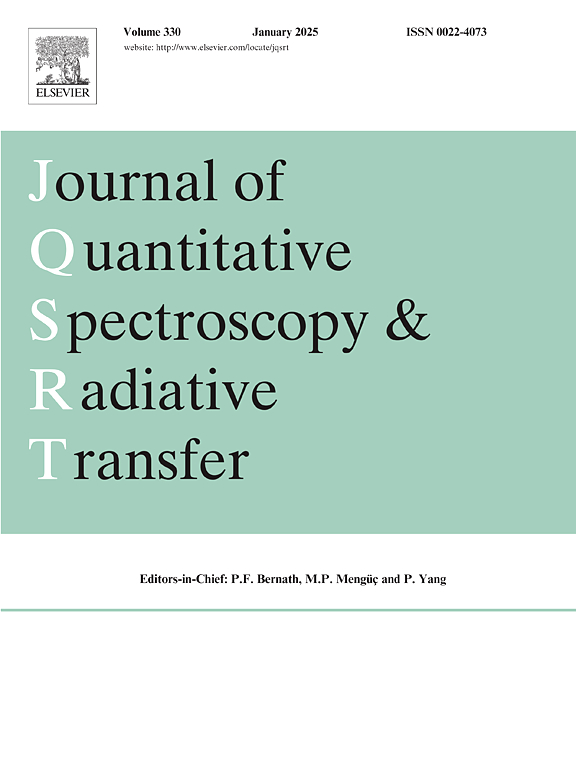Modulation transfer spectroscopy of 7Li D1 line
IF 1.9
3区 物理与天体物理
Q2 OPTICS
Journal of Quantitative Spectroscopy & Radiative Transfer
Pub Date : 2025-08-05
DOI:10.1016/j.jqsrt.2025.109594
引用次数: 0
Abstract
We present the first implementation of modulation transfer spectroscopy (MTS) on the D1 line of Li, carried out in a compact heat-pipe vapor cell with cold windows. By varying the pump and probe intensities and polarization configurations, we systematically map the MTS error-signal amplitude, effective linewidth, and slope for the ground-state crossover resonance . We observe Rabi-induced power broadening and identify optimal conditions for laser frequency stabilization via tightly focused beams with total power below 1 mW. The linlin polarization configuration yields a sharp, symmetric, high-contrast error signal with a maximal slope. Our findings establish the MTS spectrum of the Li D1 line transitions as a reliable frequency reference for quantum technology and ultracold atom experiments, particularly in scenarios where frequency stabilization must be achieved with low laser optical power.
7Li D1谱线的调制转移光谱
我们首次在7Li的D1线上实现了调制传递光谱(MTS),在具有冷窗的紧凑型热管蒸汽电池中进行。通过改变泵浦和探针强度和极化配置,我们系统地绘制了基态交叉共振F=1×2→F ' =2的MTS误差信号幅度、有效线宽和斜率。我们观察了rabi诱导的功率展宽,并确定了总功率低于1 mW的紧密聚焦光束稳频的最佳条件。lin⊥极化结构产生一个具有最大斜率的尖锐、对称、高对比度的误差信号。我们的研究结果建立了7Li D1线跃迁的MTS谱,作为量子技术和超冷原子实验的可靠频率参考,特别是在必须用低激光光功率实现频率稳定的情况下。
本文章由计算机程序翻译,如有差异,请以英文原文为准。
求助全文
约1分钟内获得全文
求助全文
来源期刊
CiteScore
5.30
自引率
21.70%
发文量
273
审稿时长
58 days
期刊介绍:
Papers with the following subject areas are suitable for publication in the Journal of Quantitative Spectroscopy and Radiative Transfer:
- Theoretical and experimental aspects of the spectra of atoms, molecules, ions, and plasmas.
- Spectral lineshape studies including models and computational algorithms.
- Atmospheric spectroscopy.
- Theoretical and experimental aspects of light scattering.
- Application of light scattering in particle characterization and remote sensing.
- Application of light scattering in biological sciences and medicine.
- Radiative transfer in absorbing, emitting, and scattering media.
- Radiative transfer in stochastic media.

 求助内容:
求助内容: 应助结果提醒方式:
应助结果提醒方式:


